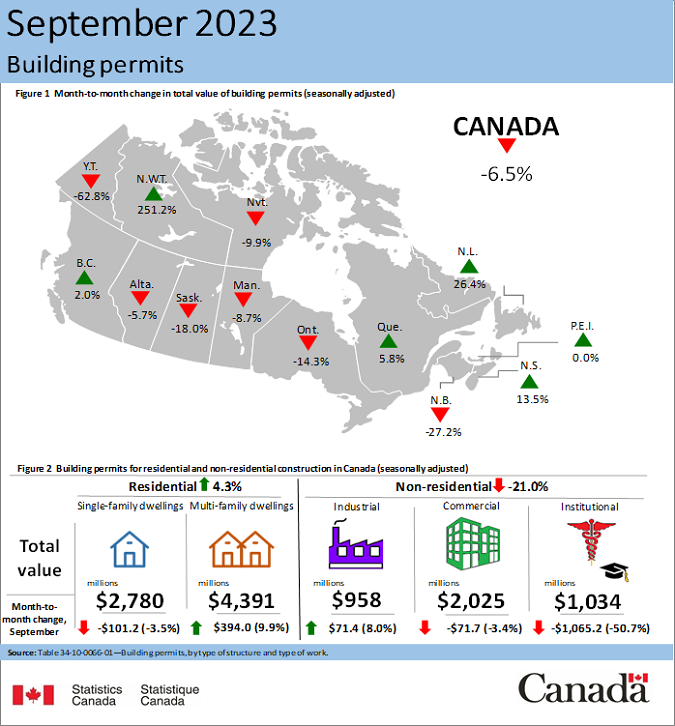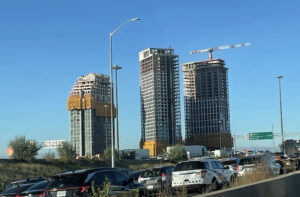
Residential construction in British Columbia surging, boosting Canada’s building permit values.
November 8, 2023 | By HPAC Magazine
The residential sector saw 64,400 new units authorized through building permits in the third quarter of 2023, including 13,600 new single-family homes.

The total monthly value of building permits across Canada in September was $11.2 billion, a decrease of 6.5% compared to the prior month. Most of the decline in value is due to a significant drop from the previous month in the institutional sector.
The total monthly value of residential permits actually increased 4.3% in September, led by a 37.2% monthly increase in construction intentions in British Columbia.
Residential permits issued in the metropolitan areas of Vancouver, Kelowna, and Victoria together made up 77.3% of the value of residential permits and 79.9% of the number of new dwellings authorized for the province in September.
Monthly gains in the value of residential permits in Newfoundland and Labrador (+20.8%; +$6 million), Prince Edward Island (+16.2%; +$4.8 million), Nova Scotia (+10.3%; +$18.5 million), and Quebec (+9.1%; +$105.2 million) offset the declines in the other five provinces.
Across Canada, 21,700 new dwelling units were authorized through building permits in September, 5.6% more than August 2023 and 2.3% more than September 2022.
 The total monthly value of non-residential permits fell 21% from August. As mentioned, the drop was attributed to the decline in the institutional component (-50.7%), following a record high for the component in August ($2.1 billion) which saw permits issued for several high valued construction projects.
The total monthly value of non-residential permits fell 21% from August. As mentioned, the drop was attributed to the decline in the institutional component (-50.7%), following a record high for the component in August ($2.1 billion) which saw permits issued for several high valued construction projects.
Despite this aberration, the total value of non-residential building permits in September 2023 ($4 billion) was 18.7% higher than September 2022 ($3.4 billion), as construction intentions in the non-residential sector have been steadily trending upwards over the course of the past year.
The total value of building permits in the third quarter of 2023 (July-Sept.) rose 4.9% from the second quarter to $34.6 billion. The residential sector increased 3.4% to $21.2 billion, while the non-residential sector was up 7.3% to $13.5 billion.
All three non-residential components (institutional, commercial and industrial) posted quarterly gains in the value of permits, with the institutional component rising 13.8% to a new quarterly record high of $4.5 billion. This was the fourth consecutive quarterly increase for the institutional component.
In the residential sector, 64,400 new units were authorized through building permits in the third quarter of 2023.
Specifically, 13,600 new single-family homes were authorized, 12.1% higher than the 12,200 authorized in the second quarter. This increase follows six consecutive quarterly declines in construction intentions for the single-family home component.
Peterborough, Ontario (+151.2% with 90 new units) was the metropolitan area with the largest growth rate in the number of new single-family homes planned.




